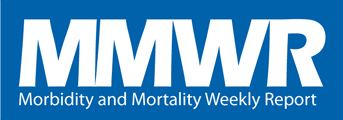MMWR News Synopsis for July 21, 2016
Increased Hepatitis C Virus Detection in Childbearing-Aged Women and Risk for Vertical Transmission — United States and Kentucky, 2011–2014
CDC Media Relations
404-639-3286
Increases in hepatitis C infection rates threaten young women and babies. CDC recommends that health care providers assess all pregnant women for risk factors associated with hepatitis C and test those who may be at risk. The national rate of hepatitis C infection among women of childbearing age (15-44 years old) increased by 22 percent (from 139 to 169 per 100,000) from 2011-2014. Over the same years, the national rate of infants born to women diagnosed with hepatitis C increased by 68 percent (from 0.19 percent to 0.32 percent). To evaluate the growing problem of hepatitis C infection among women of childbearing age, as well as the potential for hepatitis C transmission between mother and child, researchers examined trends found in data from one nationwide commercial laboratory and from birth certificate data from the National Center for Health Statistics. In addition to analyzing national trends, researchers also examined state-specific data in Kentucky, the state with the highest incidence of new hepatitis C infections according to 2014 surveillance data. Between 2011-2014, the rate of detection of hepatitis C among Kentucky women of childbearing age more than tripled (from 275 to 862 per 100,000) and the rate of infants born to women living with diagnosed hepatitis C increased 124 percent (from 0.71 percent to 1.59 percent) in the state. The authors called for improved surveillance and more research on perinatal prevention, care, and treatment.
Notes from the Field
- Rickettsia parkeri Rickettsiosis — Georgia, 2012–2014
QuickStats:
- Percentage of Adults Aged 18–64 Years With a Usual Place of Care, by Race/Ethnicity — National Health Interview Survey, 2010 and 2015
###

